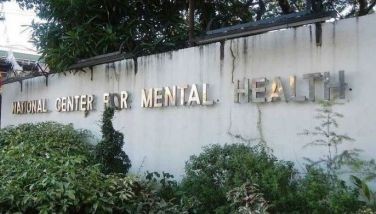Lessons from Yolanda: The Bantayan Experience
CEBU, Philippines - Early last month, Cebu and other parts of the Visayas and Mindanao prepared for something unusual – “Domengâ€, a typhoon during summer.
Warnings were issued and the weather disturbance was closely tracked. Fortunately for us here in Cebu, “Domeng†weakened into a low pressure area until it went out of the Philippine Area of Responsibility (PAR).
If such a weather disturbance happened three or five years ago, people would have gone their merry way and continued with their respective summer activities. No one would have paid attention to weather reports or monitored the storm path.
But things are different now. After super typhoon Yolanda, people are more interested in weather reports. People are more vigilant when it comes to warnings and bulletins from the weather bureau.
Ready
When the Philippine Atmospheric Geophysical and Astronomical Services Administration announced that a weather disturbance might enter the country and hit Cebu and the rest of the Visayas, the areas hit by typhoon Yolanda, people were surprised that such a thing could happen during summer.
Nevertheless, people prepared. Local government units here in Cebu braced for Domeng, even if it was still miles away from the PAR.
Among the warnings issued were for storm surges, especially since based on the advisory of Project NOAH (Nationwide Operational Assessment of Hazards) of the Department of Science and Technology, majority of towns and cities in the list that should be prepared for possible storm surges were in the Province of Cebu.
And Cebu LGUs responded, with some even implementing emergency evacuations in areas that may be hit by storm surges or landslides.
And people listened. In the past years, getting people to leave their homes because they are in danger of landslides, flooding and other disaster would have been difficult. Homeowners would refuse to leave their houses, prioritizing more the safety of their belongings than their lives.
Clearly this has been slowly changing because of what happened during typhoon Yolanda.
But will a province, city, town ever be prepared for such disasters? Moreso, how prepared is prepared? How ready is ready?
Knowledge is power
Typhoons are common in the Philippines. PAGASA says an average of 20 typhoons or storms hit the country every year. In fact, the country has been battered by several strong typhoons in the past.
It was only in November of last year, however, that the Filipinos were introduced to a phenomenon that can also happen during a typhoon – storm surges.
A storm surge, according to PAGASA, is an abnormal rise of water due to a tropical cyclone and it is an oceanic event responding to meteorological driving forces.
While scientists and weather experts are familiar with storm surges, most people in the country are not.
Until Yolanda happened.
Several warnings were given regarding storm surges and people did not know what it was then! Now, months after storm surges claimed thousands of lives in Tacloban and Leyte, weather experts continue to study the areas vulnerable to storm surges.
According to Project NOAH, the group responsible for giving accurate and integrated responsive disaster prevention and mitigation systems in the country, they have continually been identifying areas in the Philippines vulnerable to storm surges.
In Cebu for example, Project NOAH has focused in the northern area, which was ravaged by super typhoon Yolanda, said Candeze Mongaya, information officer of Project NOAH.
Although Project NOAH still has an ongoing generation of hazard maps for the storm surge inundation, Mongaya said that they have determined Bantayan Island to be vulnerable to possible storm surges. In fact, Project NOAH noted a storm surge in Bantayan Island when typhoon ‘Basyang’ made a landfall in Cebu early this year.
During Yolanda’s wrath, storm surges destroyed 90 to 95 percent of houses there, as well as the means of livelihood of residents.
Given that scientists and agencies already know of the immeasurable danger storm surges could bring, a number of people questioned why weather agencies did not give much emphasis to their warnings considering that it was new to the public? Or why these agencies did not give warnings probably more familiar to the people like likening it to a tsunami or a tidal wave.
Mongaya explained that they cannot do so since a storm surge is really different from a tsunami or a tidal wave.
Mongaya said there are factors that cause a storm surge - typhoon with winds strong enough to pull the air up; the topographic feature of the area, a shallow continental shelf has bigger possibilities of high tides; and storm surges only happen during high tide.
Super typhoon Yolanda had a maximum speed of 320 kilometers per hour as it traversed the central part of the country including the northern part of the province, leaving scores dead and damaging properties.
In Cebu province, 15 municipalities and one city were battered by Yolanda. A total of 103, 831 houses were damaged while 152, 746 families were affected, based on the report of the provincial government.
The town of Madridejos was among the areas in Cebu that Yolanda battered the most.
Madridejos Mayor Salvador dela Fuente described their local disaster risk reduction management as active even before super typhoon Yolanda hit Cebu province. He said that workshops on disaster preparedness including information drive were implemented in the municipality.
In its annual budget for 2013, the municipality set aside P2 million as calamity fund which is five percent of its total Internal Revenue Allotment. Thirty percent of the calamity fund was allotted for disaster preparedness.
Mayor Dela Fuente, however, said that the calamity fund was not ‘fully’ utilized until a “monster†typhoon battered northern Cebu including the island of Bantayan where the municipality is located.
Madridejos town, in particular, had 9, 390 families affected.
Storm surges brought by Yolanda destroyed pump boats of the fisherfolks, affecting the livelihood in the area.
Mayor Dela Fuente said that livelihood topped the most affected sector in the municipality. In the latest report of the Task Force Pag-lig-on, a group directed by the provincial government to man and monitor the rehabilitation effort in north Cebu, the total amount of damage inflicted to livelihood was pegged at P177, 986 million.
Apart from the livelihood, tourism in the municipality was also affected. Madridejos’ Kota Park was not spared from Yolanda’s onslaught. Mayor Dela Fuente, however, said that the park is already under repair and would be restored before the year ends.
Despite being toppled down, the municipality is trying to take up its cross and move towards recovery.
Dela Fuente said that they are now in the phase of giving out construction materials to the affected individuals whose houses were destroyed.
Non-government organizations and different national government agencies are also extending aid to the town.
Super typhoon Yolanda may have left too much destruction, but Dela Fuente said it served as room for improvement, referring to the resiliency of constructions.
“There should be resiliency. Kung naa gyoy budget, evacuations centers, eskwelahan, should be strong enough. After typhoon Yolanda, we will proceed to another phase which is to strengthen the disaster,†Dela Fuente stressed.
In the town of Sta. Fe, Mayor Jose Esgana said the municipality is eyeing at relocating those living in coastal areas considering that they are very much prone to storm surges.
Apart from this, the municipality would also strengthen the information dissemination in the town and plans to initiate programs that boost the awareness of the public, especially when it comes to climate change.
When Yolanda struck the area, Esgana said that people then lacked awareness regarding the hazards and effects brought by storm surges.
“Usa na sa atong panghingusgan. Aron makabalo na sila aning giingon nato nga the new normal. At least ma-aware na sila,†he said.
He added that LGUs learned a lot from the Yolanda experience, such as disaster preparedness and response.
He said that the town is also pursuing various trainings where at least one member of a family learns about early warning systems, preparedness, as well as post-disaster response.
The town has set aside P2.5 million from its total Internal Revenue Allotment as the town’s calamity funds of which would be used for disaster preparedness and quick response.
The municipality of Bantayan is also strengthening its disaster response and preparedness through the conduct of various trainings.
Bantayan Mayor Ian Christopher Escario said that the trainings helped a lot during Yolanda’s wake. Equipment for response are also made available in anticipation of calamities that would hit the town.
“Di ko kaingon nga ready na gyod mi pero naggamit gyod kaayo among training katong Yolanda. Mangandam lang gyod ta kanunay..Mag-ampo gyod ta,†he stressed.
Escario added that as of the moment the town is putting its utmost focus to recovery and rehabilitation.
Among the municipalities and city battered by super typhoon Yolanda, the town of Bantayan has the greatest number of families affected which is 22, 687.
Yolanda also inflicted severe damage to the various sectors in the town amounting to P1.5 billion. This includes utilities, livelihood and employment and social infrastructure. —/QSB (FREEMAN)
- Latest





















